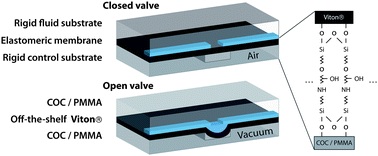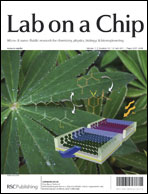Chemically resistant microfluidic valves from Viton® membranes bonded to COC and PMMA
Abstract
We present a reliable technique for irreversibly bonding chemically inert Viton® membranes to PMMA and COC substrates to produce microfluidic devices with integrated elastomeric structures. Viton® is widely used in commercially available valves and has several advantages when compared to other elastomeric membranes currently utilised in microfluidic valves (e.g. PDMS), such as high


 Please wait while we load your content...
Please wait while we load your content...